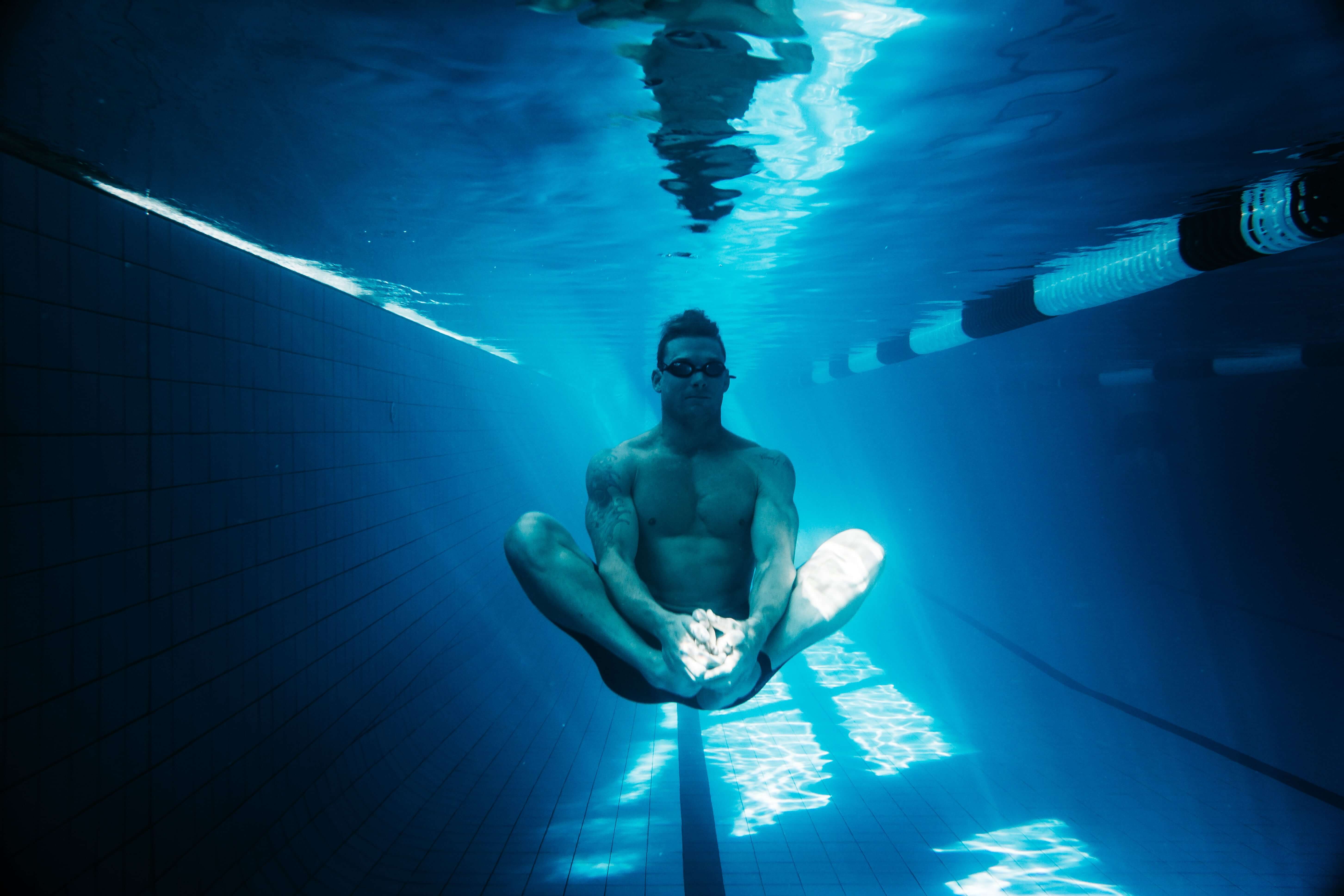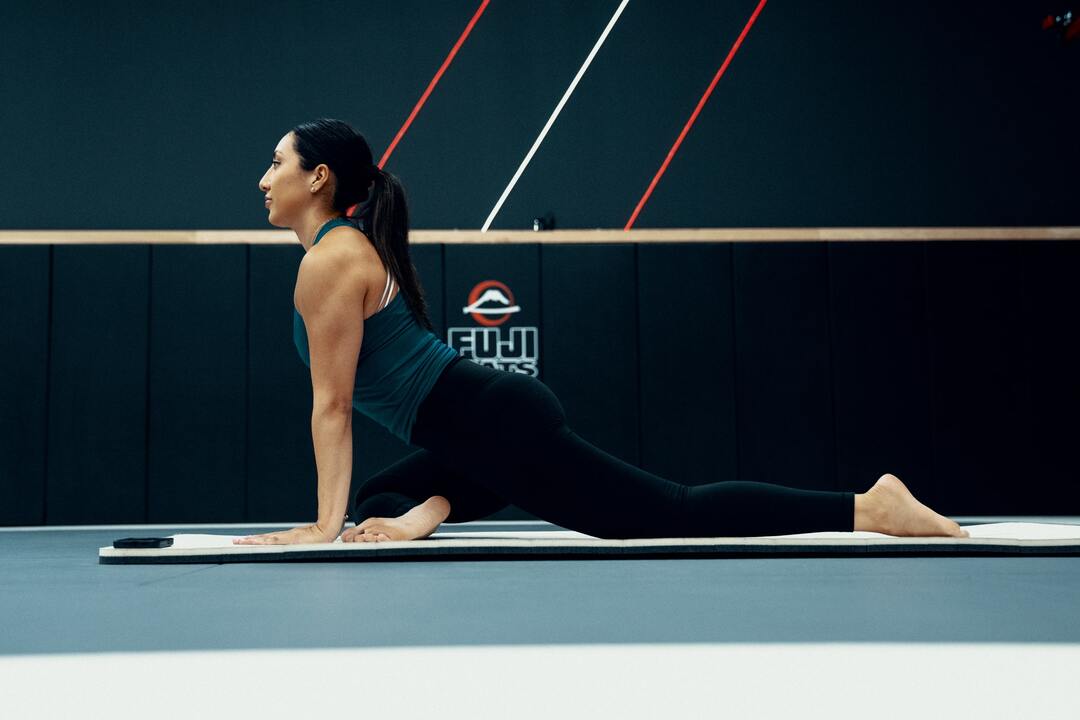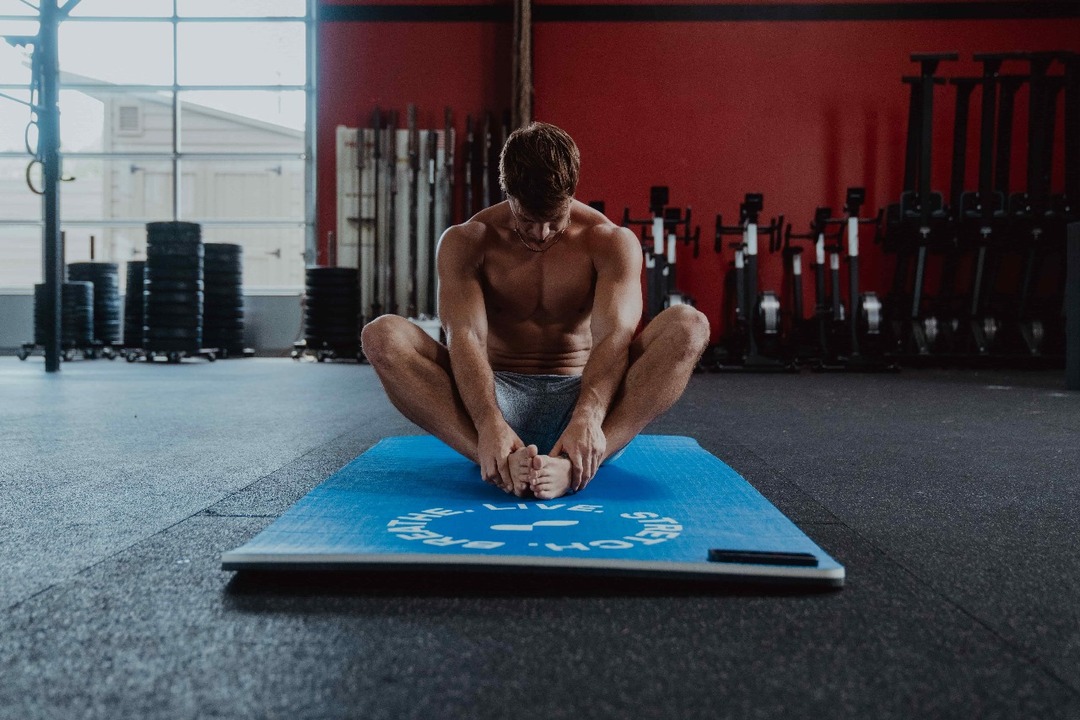After a long race or challenging workout, it can be tempting to take it easy and do nothing. But this often leads to more stiffness and soreness. On the other hand, low-intensity movement can help you recover faster and reduce muscle soreness. But what kind of movement is best? Swimming? Running? Cycling? Recovery is specific to the athlete, the sport, and individual preferences. Incorporating the best recovery tools for athletes—such as massage guns, compression gear, and hydrotherapy—can also enhance the process. So, if you enjoy swimming and are looking for ways to boost your recovery, you may ask yourself, "Is swimming good for recovery?" This article will answer that question and offer Swim Tips to help you use swimming as a recovery tool.
One way to make your recovery smoother is to have a plan, and Pliability’s mobility app can help you create one that meets your needs. With the app, you can access targeted recovery protocols for different training cycles, including post-race and post-injury, to help you get back to your sport safely and efficiently.
Is Swimming Good for Recovery?

Swimming is a low-impact activity that can aid athletes in recovery. Like cycling, swimming is easy on the joints and gets the blood pumping to support recovery processes. "Swimming is an excellent form of active recovery as you can move with ease on your front or back, maintaining a horizontal flow for blood to reach the upper body more efficiently," explains Zvika Zelinger, a leading Israeli swim trainer and public speaker.
“The benefits of a swim recovery include a low-impact exercise for the whole body, with multiple ways to move all muscle groups and joints that you may not be able to do on land,” says Terry Fritch, Head Coach of Life Time Swim of North Carolina.
What Does the Research Say About Swimming and Recovery?
A study of 21 swimmers who completed a series of swimming drills found that active post-recuperation exercises increased the rate of blood lactate dissipation, improving swimmers' physical performance. These active recovery sessions allow the body time to clear the lactic acid, a byproduct of converting glucose into energy, helping us recover quicker.
Another study focused on 11 competitive swimmers who performed two 100-meter maximal swim drills, followed by a 15-minute interval of either:
- 15-minute passive recovery; a combined 5-minute active and 10-minute passive recovery
- 10-minute active and 5-minute passive recovery
The main finding is that a 5-minute active recovery and 10 minutes of passive recovery improved their performance. Thus, the study concludes that an active five-minute recovery can reduce blood lactate concentration and positively affect subsequent performance.
Swimming Speeds Recovery by Reducing Muscle Soreness
Another study, published in the International Journal of Sports Medicine examined the performance of nine top triathletes. On two occasions, the athletes performed an interval run of 8 x 3 minutes at 85% to 90% of VO2 peak velocity.
Ten hours after the run, they either swam 2,000 meters or lay down for an equal amount of time. Fourteen hours later, the subjects performed a high-intensity run to fatigue to assess how well their running performance had recovered from the previous day’s interval sessions.
Swimming Enhances Recovery and Run Performance
The results showed the athletes improved by 14% in their run time to fatigue after swimming for recovery compared to lying still (13:50 versus 12:08), concomitant with decreased levels of c-reactive protein, a biomarker for inflammation.
This suggests that swimming for recovery enhanced subsequent run performance by attenuating tissue inflammation caused by initial exertion and benefiting from water's hydrostatic properties. Interestingly, the study also found no significant difference in perceived recovery between the two test groups while clearly showing differences in performance.
Who Can Benefit From Swimming Recovery?
Based on the studies mentioned, it is plausible to infer that swimming as an active recovery method is the best option for swimmers, triathletes, and runners.
For triathletes, this information can be helpful in planning training sessions by including their swims on days after running. But could this recovery method also be applied to other sports? Many sports partially rely on running for improved performance:
- Soccer
- Football
- Rugby
- CrossFit, to name a few
Recovery swimming improved performance in the latter study due to the attenuation of tissue inflammation. In that case, it is possible that recovery swimming could universally apply to any sport that causes tissue inflammation upon exertion, not just running.
7 Reasons Swimming Is Good For Recovery
1. Gentle On Joints And Muscles
Unlike high-impact exercises, swimming is incredibly gentle on joints and muscles. The buoyancy of water reduces pressure on joints, making your body feel lighter and supported.
This makes swimming ideal for recovering from injuries or chronic conditions like arthritis. Whether swimming laps or moving gently through the water, your body can heal without the added stress of weight-bearing activities.
2. Full-Body Workout Without The Strain
Swimming works all the major muscle groups simultaneously, giving you a full-body workout without the harsh impact on any specific area. Each stroke, whether freestyle, backstroke, or breaststroke, engages different muscles, ensuring you stay active even during recovery.
This low-intensity movement helps to keep your muscles loose and flexible, preventing stiffness while promoting strength, another reason swimming is good for recovery.
3. Enhanced Blood Circulation For Faster Recovery
One key reason swimming is excellent for recovery is its ability to boost blood flow to sore muscles. Warm water, in particular, dilates blood vessels, improving circulation and delivering oxygen and nutrients to the muscles that need them most.
This helps repair micro-tears in muscle fibers, reduce inflammation, and speed up recovery time.
4. Eases Muscle Soreness And Prevents Doms
Delayed-onset muscle soreness (DOMS) is common after intense workouts and can slow progress. Swimming, especially in warm water, helps alleviate this soreness by keeping muscles moving in a low-impact environment.
The gentle, rhythmic motions help reduce the build-up of lactic acid in muscles, which is often the cause of post-workout soreness.
5. Reduces Stress And Enhances Mental Recovery
Recovery isn’t just about your muscles, it’s about your mind, too. Swimming has a soothing effect on both the body and the brain. The repetitive strokes, the sensation of water, and the meditative qualities of swimming all work together to reduce stress.
Swimming allows your body to recover holistically by easing mental tension and promoting physical and psychological well-being.
6. Adaptable To All Fitness Levels
One of the greatest things about swimming is how easily it can be adapted to any fitness level. Whether you’re a professional athlete recovering from intense training or getting back into shape after an injury, swimming can be tailored to your needs.
You can vary your intensity, try different strokes, or simply float and relax, making it accessible for everyone.
7. Complements Other Recovery Techniques
Swimming can easily be combined with other recovery techniques, such as yoga, stretching, or massage therapy.
For example, combining swimming with yoga stretches can help improve flexibility and reduce muscle tightness. A light swim can cool your body down after a tough gym or strenuous sport and prepare you for more specific recovery practices.
Related Reading
- What Is Active Recovery
- Why Is Recovery Important for Athletes
- Is Yoga Active Recovery
- Should You Be Sore After Every Workout
- Calves Sore After Running
- Which Muscles Recover the Fastest
- Why Are Ice Baths Good for Muscle Recovery
- What to Do on Recovery Days
- Why Is It Important to Include Recovery Time in a Workout Program?
- What to Drink for Muscle Recovery
Sample 20-Minute Active Recovery Swim

This 20-minute active recovery workout includes a warm-up, a workout, and a cool-down.
Warm-Up
Repeat twice:
- 50-meter breaststroke with arms only, keeping your legs closed together
- 50-meter kick, holding onto a foam board and kicking with just the legs and feet
The Workout
Complete twice:
- 25-meter freestyle swim, keeping your hands in a fist
- 25-meter freestyle swim, hands in a normal position
Tip: Keep one arm in front, touching the ear, and the other near the thigh for a better axis rotation as you swim.
Followed by:
- 100-meter freestyle: swim with a one-arm stroke, followed by two kicks before switching arms. When kicking, keep your arms in a streamlined position.
- 100-meter count: after one freestyle stroke, hold a streamlined position and count to three before swimming another stroke
- 50-meter freestyle, breathing every third stroke
Cool-Down
- 100-meter slow and easy swim with a stroke of your choice to finish
What to Expect from This Intermediate and Advanced Swim Routine for Active Recovery
This 20-minute active recovery swim is suitable for experienced swimmers. It includes a warm-up, a workout, and a cool-down.
Warm-Up
- 100-meter classic backstroke with one stroke and two kicks
The Workout
- 100-meter classic backstroke
- 100-meter freestyle, breathing every three arm strokes and then every five strokes
Tip: Swim easy, calm, and steady, even when short on air.
- 50-meter freestyle to backstroke kick rotation: use only kicks to rotate from your front to your back around every seven seconds
Complete twice:
- 50-meter freestyle with dolphin kicks
- 50-meter breaststroke with arms and dolphin kicks
Followed by:
- 100-meter breaststroke with an exaggerated arm stretch.
Tip: Stretch as much as possible while holding a streamlined position with pointed feet and extended shoulders.
The Cool-Down
- 50-meter freestyle
- 50-meter classic backstroke
Related Reading
- Natural Muscle Recovery
- Is Sauna Good for Muscle Recovery
- Benefits of Active Recovery
- How to Speed Up Muscle Recovery
- How to Get Rid of Sore Muscles Overnight
- Should You Workout When Sore
- Active Recovery vs Rest Day
- Active vs Passive Recovery
- How to Speed Up Muscle Strain Recovery
- Muscle Recovery Time by Age
- Recovery Methods for Athletes
Other Active Recovery Practices to Combine with Swimming

As a swimmer, you may take recovery seriously. After all, swimming works your entire body and helps you recover from any sport or exercise. To enhance recovery even more, you can engage in complementary recovery activities. These include:
- Stretching
- Foam rolling
- Yoga
- Light cycling
Essential Post-Swim Habits for Better Recovery
Each helps to ease the transition back to normal function after swimming. While you have started to take the initiative in swimming, why should you stop there?
There are many accessory habits that you can mix with your swimming session and your daily routine. The following accessory steps are all to keep your body running at full efficiency. Most, if not all, argue that more is better in the case of health.
Eat Right to Recover Right
The first of these accessory habits is finetuning your diet with the calories burned. With all the calories burned during swimming, you want to feed your body with the appropriate nutrients to promote recovery. Your 30-minute session doesn’t constitute a large pizza.
For the machine to run correctly, it needs the right fuel to compensate for the damage. A healthy balance of protein, complex carbs, and unsaturated fats will ensure your body reflects the progress. A lean six-pack is made in the kitchen, after all.
Stretch It Out
To correspond with that, you should also stretch your entire body. Whenever you work out, your body produces lactic acid stored in your muscle tissue.
This causes a feeling of fatigue and soreness after a workout. A quick stretching session or casual yoga will eliminate the acid build-up, relax the muscles, and put your entire body at ease when it comes to sleep.
Related Reading
- Which Magnesium Is Best for Muscle Recovery
- Hot or Cold Bath for Muscle Recovery
- Benefits of Massage Gun
- Foam Roller Benefits
- Chocolate Milk for Muscle Recovery
- How to Speed Up Muscle Strain Recovery in Back
- Causes of Poor Muscle Recovery
- Active Recovery Workout
- Active Recovery Stretches
- Best Recovery Tools for Runners
- Best Vitamins for Muscle Recovery
- Best Foods for Muscle Recovery
- Workout Recovery Tools
Improve Your Flexibility with Our Mobility App Today | Get 7 Days for Free on Any Platform
Pliability offers a fresh take on yoga tailored for performance-oriented individuals and athletes. Our app features a vast library of high-quality videos designed to:
- Improve flexibility
- Aid recovery
- Reduce pain
- Enhance range of motion
Pliability provides daily-updated custom mobility programs for those interested in optimizing their health and fitness. It also includes a unique body-scanning feature to pinpoint mobility issues. If you're feeling limited by pain or the ability to move, Pliability aims to complement your fitness routine and help you move better.
Sign up today to get 7 days absolutely for free on iPhone, iPad, Android, or our website to improve flexibility, aid recovery, reduce pain, and enhance range of motion with our mobility app.








